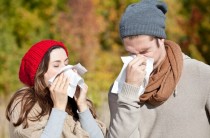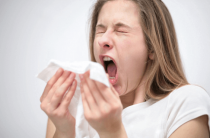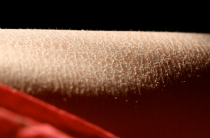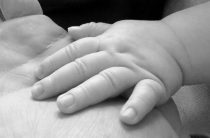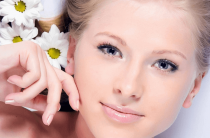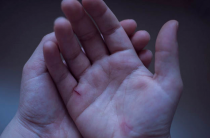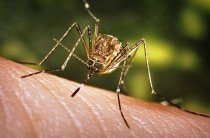Even without delving into the intricacies of medical science, one can understand that our skin is a reflective mirror of the state of all organs and systems of the body. As a rule, its modifications indicate an allergic reaction. Our body conducts such a reaction in the presence of a provocative allergen, which the immune system considers potentially harmful.
It can manifest itself under the guise of various skin changes - rashes, blisters, vesicles, swelling and others. Among the most common skin manifestations, one of the most unpleasant is hives (blisters).
Causes of allergies in the form of blisters (urticaria)
There are quite a few reasons that provoke the development of urticaria in both adults and children. But most of them are allergic in nature, and patients with atopy, that is, a tendency to allergies. And also urticaria can develop against the background of chronic bronchial asthma, dermatitis, allergic-type rhinitis. Atopic dermatitis and allergic contact dermatitis also lead to the development of pathology. These types of allergic pathologies develop with direct contact of the allergen and the human body, as well as from the prolonged influence of the irritant on the human body.
Such irritants for a person prone to allergies can be: metals (nickel and chromium), food industry chemicals (dyes, flavors, stabilizers, preservatives), household chemicals (detergents, and especially powders for washing clothes), clothing care products and footwear, components of cosmetics, food (especially sweets), medications (penicillin and its derivatives) and various chemicals, as well as environmental elements - insect bites.
Symptoms
From urticaria, various skin modifications appear on the human body, including blisters, different in size and shape, which can even be located on the feet and palms. Urticaria brings the patient constant excruciating discomfort because the blisters that occur with it are accompanied by severe itching. Before any changes appear on the skin, a person feels itching and burning, in those places where rashes are about to appear. The first thing with the development of urticaria, the skin begins to blush strongly, acquiring a bright red or pink color. Simultaneously with this process, the formation of significant volume of blisters with liquid filling inside. To be sure of the diagnosis, it can be checked by stretching or pressing on the affected skin area - if you have hives, then the rash should become significantly pale.
Urticaria is characterized by rapid development and a short period of flow - if you do not scratch the blisters, that is, without leaving them without a crust, then the rash disappears within three to four days. For complete healing of the skin, it will take about seven days, provided that the effect of the allergen on the body has been neutralized. But if the patient constantly combs the blister, thereby preventing the formation of a crust, the healing process of the skin can stretch for an indefinite period. Plus, such actions can bring pathogenic microbes into the wound and thereby lead to the formation of a purulent wound. It is possible that after healing of blisters in one affected area, new blisters may appear in a completely different place. Urticaria is often accompanied by symptoms such as swelling of the nose, lips, eyelids, tongue and even genitals, a sharp increase in body temperature, chills, pain in the abdomen, nausea, vomiting and indigestion (diarrhea).
The course of allergies is observed against the background of general malaise, fever and headaches. If periods of occurrence, that is, exacerbations, of an allergic reaction occur within three months, then this is considered a chronic form. Such allergic urticaria can accompany a person for months and even years. To the above symptoms, in the chronic form of allergic urticaria, you can add more sweating, sleep disturbances (insomnia) and high irritability.
Treatment of allergies in the form of blisters (urticaria)
In the fight against painful skin changes, whether allergic or not, it is very important to go to a dermatologist and an allergist in time, whose specialization is skin pathologies, and not hope that it will go away on its own or be treated on its own. Before prescribing treatment, the doctor needs to diagnose which allergen the body has reacted to. To do this, there are procedures such as blood tests and allergenic skin tests.
The first step in the treatment of allergic urticaria should be the termination of human contact with the allergen and further prevention of its effects on the body. This step will reduce the risk of developing symptoms to life-threatening levels and make the course and treatment of hives easier for the patient. Further treatment is carried out with the help of medications. To heal skin manifestations, including blisters, doctors may prescribe:
- Antihistamine medicines. These drugs can be prescribed both for systemic effects on the affected area of the skin, and for local ones. The main property of antihistamines is to reduce the level of histamine exposure to the patient's body, which in turn fights swelling of the tissues of the affected skin area. The drugs in this group include Tavegil, Diphenhydramine, Fenkarol, Claritin and Peritol.
- Glucocorticoids. Preparations of this hormonal group are used to stabilize cell membranes. In other words, they make cells less prone to destruction, which in turn will slow down the spread of the inflammatory process and reduce the signs of allergies. These are such drugs - Kenalog, Triamcinolone, Dexamethasone,
- Calcium-containing preparations. Drugs such as Calcium Chloride and Calcium Gluconate tend to reduce the level of vascular wall permeability. Which, in turn, inhibits the formation of exudate, a substance that fills blisters and blisters that form on the human body when an allergic reaction occurs.
- Vitamins. The use of vitamins C, A, E, as an additional remedy in the treatment of allergies in the form of blisters with the drugs listed above, will help reduce vascular permeability.
- Enterosorbents. The drugs of this group are used to treat allergies provoked by a food irritant in order to detoxify the patient's body. Examples of such drugs are Enterosgel, Polyphepan, as well as ordinary activated carbon.
For the treatment of allergic blisters and blisters (on the arms, legs and body), physiological procedures are allowed, namely electrophoresis in combination with Calcium Chloride, Magnesium sulfate, Novocaine and Lidase.
If the doctor prescribed an opening of the blister, then do not forget about the use of local antiseptic agents (potassium permanganate solution, Boric acid) and anti-inflammatory drugs (Tanin, Ichthyol). This simple, but very important step will help you reduce exudate, inflammation, and also warn against the formation of an abscess.
A separate shelf in the treatment of allergies in the form of blisters should be taken for medicines to combat itching. Thanks to them, you will save yourself from combing blisters, which in turn will reduce the risk of penetration of pathogenic microorganisms inside and the development of purulent formation. Among this group of drugs, Anestezin, Menthol, Diphenhydramine, plus acids (citric, acetic and carbolic) can be distinguished.
In the treatment of allergies in the form of blisters, it is worth including a review of your daily diet. Limit your intake of dietary salt as it retains fluid in the body, which only contributes to swelling. You will have to completely abandon fast carbohydrates. The intake of fatty foods also needs to be reduced, and also gradually eliminated eggs, canned smoked meats, spices, citrus fruits, sweets, soda, as well as some berries - strawberries and strawberries. Doctors strongly recommend adjusting your diet towards vegetarian eating habits.
Last but not least, the treatment for blister allergies is hygiene. It must not be evasively adhered to on the areas of the body affected by rashes. When washing, refuse to use washcloths, use hypoallergenic soap. At the time of treatment, it is worth refusing to apply cosmetics to the affected areas of the body. For the purpose of moisturizing, it is better to use petroleum jelly or ordinary vegetable oils.
Allergy Prevention
For people prone to allergies, preventive measures are very important. This also applies to people who have already met with rashes in the form of blisters on the body. These preventive measures include daily and strict adherence to hygiene procedures, using hypoallergenic cleansers and cosmetics, avoiding possible contact with an irritant, and resolutely giving up bad habits (alcohol abuse, smoking). The patient needs to minimize the effect of stress on the body, and sports are also recommended. People who work in the chemical industry and are prone to allergies should not go to work without protective equipment - gloves and special shoes.
If this article didn't give you all the answers to the allergy blister bill you're worried about, then you can ask them right now on this site!

